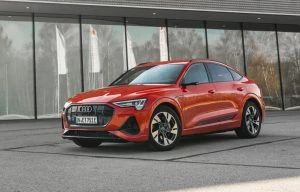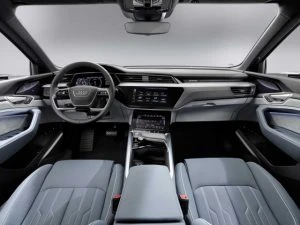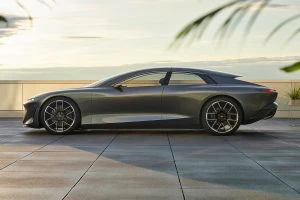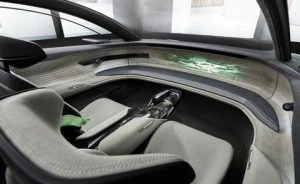Autonomous Vehicles
New Cars and Software Updates

How would you react if you had to pay for the apps that appear on the touchscreen of your new car? Various auto manufacturers are looking at new ways to charge owners money for features that were previously sold as an option for the car when you bought it new. One idea that has shown up in their brainstorming sessions was to charge car owners subscription fees for features like Apple CarPlay and its phone-pairing connectivity – as BMW is already doing. Of course, this has been a feature that has been included for free on many mainstream cars.
Perhaps not so surprising to many would be the results that Cox Automotive collected, which were collected from a survey that asked a relatively small group of a little over 200 people about their thoughts and attitudes towards having to pay over and over again for features that used to be included at the point of sale. Around 75% of the survey respondents would refuse to pay for features on an ongoing basis.
When asked about having to pay for any safety features on an ongoing basis, the survey showed that around 80% would not want to pay for these safety items again and again. However, if forced to, these same respondents would be prepared to pay up to $35 per month. I’m not sure whether the people surveyed were by enlarge high-flyers or a decent cross-section of society that included your average wage earner. This cost per month was the highest level that these respondents would be prepared to pay for them if they were forced to.
A full 92% of respondents said that the physical items like heated and cooled seats, massage functions, or a refrigerated drinks box should be purchased as a one-off-at-the-point-of-sale option, just like anyone does now when they buy a new car with extra options.
A new car these days is full of computerised technology, so any software updates or subscription fees for software enhancements, EV power upgrades, satellite or vehicle locator enhancements need to be paid for somewhere along the line. The funny thing is that, even as with a standard Office update on a desktop, the real-life software updates rarely have any significant practical benefits in real-life usage for the user. Sometimes a new desktop Office update can even complicate things with the user having to relearn the fifth new visual format and appearance update in two years – I know, I was probably exaggerating.
I guess I would be prepared to pay for a driving range enhancement or a better battery capacity after purchasing a new EV, though I guess this could be a bargaining carrot for keeping a customer longer and loyal to a brand, or even enticing them to buy a certain car in the first place.
Interestingly, around 50% of the survey respondents weren’t even aware that subscription fees for car features were a prerequisite. Rising costs that grow quicker than someone’s usable income is never a welcome scenario, so these sorts of surveys and results will hopefully provide auto manufacturers with the necessary feedback from their customers, and on the customers’ tolerance for any new additional fees in general.
What Are The Different Levels Of Driving Autonomy?
As auto manufacturers race against one another to release self driving vehicles, motorists will soon be presented with all types of autonomous driving solutions. With so many options likely to be available, as well as some current models that already claim to offer self driving functionality, motorists should be aware of the technology’s various iterations – namely, the five levels of autonomy.

Level Zero: This is what we’ve been accustom to in vehicles right up until today. These vehicles are dependent upon full driver input, with the exception of automatic safety features which are designed to prevent or mitigate the impact of an accident.There is no degree of automation which goes into the driving process.
Levels One and Two: This next band of technology is a step up from complete dependence on drivers, to a system where support is offered to manouevere and adjust the speed of the vehicle. The important feature to distinguish this stage is that it is only support which is offered, as the driver will still need to maintain a connection with the car. In a way, this adds a degree of control and surety when changing lanes and activating cruise control, since prompts will be made to the driver to maintain their focus and thus keep the car operational.
Level Three: This is the threshold at which point the vehicle becomes responsible for controlling the driving functionality, as well as responding to the driving environment. This is also the level at which point motorists may begin to disengage from the vehicle without it shutting down. Motorists may still be required to respond to unforessen events or directional queries, however, by and large the vehicle can navigate more complex driving conditions. A number of car manufacturers are currently operating at this level, even though forecasts had the industry meeting this level much sooner. Tesla is among those currently very active in this space as a frontrunner.

Level Four: The car is now equipped to fully navigate itself and also react as necessary in the event of an emergency. Any human dependence or interaction is limited specifically to the activation process when turning on the system upon ignition, and in an advisory capacity if required for navigation input (e.g. route selection) – rather than requests. There are only a couple of players currently operating at this level, and that includes heavyweights Waymo, owned by Google’s parent company Alphabet, and another being Uber.
Level Five: The truly driverless vehicle. With level 5 capacity, a vehicle is capable of transporting its occupants without the need for a driver to be present. Similarly, the car may also be used without occupants or a driver as a remote vehicle to collect a person, or instead deliver an item to a specified address.
Importantly, the development in this space is taking place overseas, where the infrastructure and testing is in a better position to support development. Closer to home, not only do we need to see regulatory change, but also a sizeable shift in motorists behaviours. Until then, it’s a long waiting game for new car buyers hoping to take up a fully-autonomous vehicle.
Audi News

Audi has been pumping out some magnificent cars in the last few years, most of them being excellent petrol and diesel cars. What direction are they taking in the blending of hybrid technology and EV-only? The straight answer is that Audi is on the ball and have been introducing an exciting range of EV power into their brand nice and gradually, as they should.

Audi e-tron S Sportback
The e-tron is, perhaps, the more widely identified model that Audi are making as fully electric cars. The e-tron is already nearing a new update, and the set of models we’re likely to see arrive sometime in 2022 are the Audi e-tron S and the Audi e-tron S Sportback. What is special about these two is that Audi e-tron S models carry two electric motors on the rear axle and one on the front and can generate a nearly instantaneous 370 kW of power and 973 Nm of torque in full boost mode for 8 seconds at a time. Because the 2 rear motors have been designed independently of one another, they can operate with the utmost precision and can help the driver power out of corners with the confidence of Audi’s special torque vectoring systems. In normal driving conditions, the front motor remains off until it is needed. When needed for ultimate performance and traction, the front electric motor flicks on and into action.
The new Audi e-tron S models boast wider bodywork than the standard models. They will be equipped with Digital Matrix LED headlights, where each light is divided into 1.3 million pixels and can be controlled with precision, opening up many new functions. As road traffic regulations allow, these digitized lights could include on-road lane markers and lightbeam functions that can dip around or below other cars. The matrix-design LED headlights come as standard, however.

Audi e-tron S
Both of the Audi e-tron S models come standard with a 12.3-inch virtual cockpit, 3D satellite navigation imagery, predictive traffic light information, in-vehicle LTE-powered Wi-Fi for up to eight connected devices, a top-view camera, traffic sign recognition, Audi active lane assist with turn assist, Audi pre sense front, adaptive cruise assist and Audi phonebox with signal boosting capability.

Audi Grandsphere Concept
Also hugely exciting for Audi fans is the Audi Grandsphere concept, a luxury sedan with an electric drive system. Magnificent comfort, which Audi liken to a first-class flight, will be the experience Audi is aiming for with Grandsphere. At 5.35 metres long, the Grandsphere sedan combines the luxury of private travel in ultimate comfort with a comprehensive onboard experience with Level 4 automated driving where the interior turns into a spacious sphere of experience without a steering wheel, pedals, or displays. Instead, the front of the cabin is a first-class lounging area with maximum space, more open views, and access to all the functions of a holistic digital ecosystem that the Audi Grandsphere will provide. This is a very ambitious car; however, with the rate of hybrid and EV technology becoming more and more readily available, and as we already live in an age where digitized everything is at your fingertips or voice control, the Grandsphere concept might not be too far from becoming a reality. I only hope that the fun and satisfaction of human ability and the experience of the real world will not be stifled by technology and virtuality.

Audi Grandsphere Interior Concept
The Things We Do in Our Cars

I was thinking about the different demands that we all put our vehicle through on our daily drives throughout a year. It got me thinking about all the changes that can happen to us inside 12 months – whether the weather seasons change dramatically, families get larger or smaller, job promotions happen, we can change jobs for whatever reason, building renovations happen, moving house occurs, we make new friends, we start a fitness schedule at the gym, we try out a new sport across town, go fishing, go for that caravan trip around Australia and what not… Our lives are fun and full of regular tasks that we both love or put up with, have jobs that we stick with or change, are full of people that come and go and people that we just love to be around and who will always be a part of our life. The cars we drive regularly, are often a reflection of our lifestyle and can tell us a story about who we are and where we are in life.
With this ticking through my thought processing, I started to think about the changes that may or may not happen to our cars as we drive them, and how the lifestyle changes and choices that we make can affect the cars we drive. In essence, a car is a very adaptable machine (or at least should be), and it has to be fit for purpose to cater to our own individual needs. Often, I find myself needing to hitch up the trailer to grab some more compost for the garden, take a load to the recycling centre or help out a mate who is shifting house. I like to make use of my drive into town to charge my mobile phone up on the way and listen to my favourite music with the volume wound right up. Some days the temperature outside can get so cold in wintertime that I need to wind up the heater in order to thaw my fingers out and demist the rear window. But then in summer, when the temperatures soar, I’ll have the air-conditioning wound up to maximum to keep the family inside the car nice and cool, particularly when we have the tiny grandchild travelling with us.
We have different drives that we frequently make in a month, and they all take different roads and cover varying landscapes. Some journeys require us to drive up steep streets to get us to our friend’s house on top of the cliffs overlooking the sea, other roads have us in the middle of congested city streets and then another drive may take us for an hour or two north into the wild blue yonder through flat and undulating scenery to visit family.
We’ve learned to trust our cars to get us from A-to-B whatever the weather, whoever we have onboard, whatever we have to tow or carry. Can a new EV manage all the lifestyle changes and demands dependably? I’d hate to be late for my daughter’s graduation because my EV ran out of power halfway there, or that I missed the ferry because the EV had to be topped up at a charging point that had a long queue, and what about the police who aborted a chase after a dangerous criminal because he spent too long with the heater on and the siren going at the same time.
We need a car fit for purpose, a car that is cheap to run, nice to the environment and above all dependable!